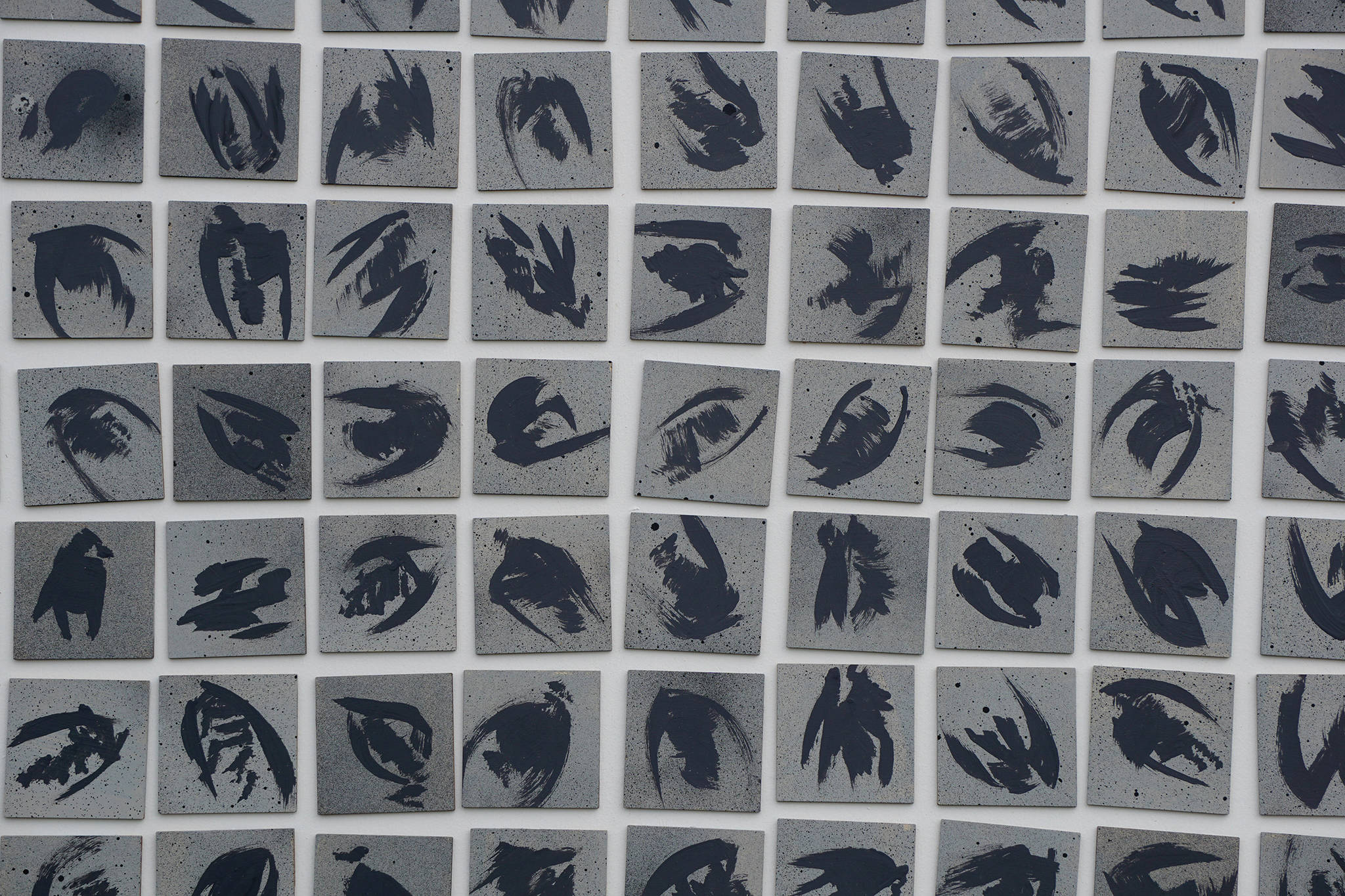When faced with honoring the dead killed by tragedy or violence, artists grapple with the enormity of the event. In documenting dead sea birds she found while biking and paddling the Arctic coast from Kotzebue to Point Hope, Homer artist and adventurer Kim McNett painted the images of the birds she found stranded on the coast on square wooden tiles.
Nine-hundred and twenty-one birds and 921 paintings.
“I had the idea of folding 1,000 cranes,” McNett said, referring to the Japanese origami tradition of the senzabazuru, where a person’s wish may come true if you fold that many cranes. “If I painted every one of them (the birds), it’s a prayer and a wish for their recovery, a grieving process. … It’s like a Seafarer’s Memorial, to represent every one of them, to give them their full honor.”
Artists have often created individual sculptures, paintings and monuments to honor groups of victims. For the Oklahoma City National Memorial to bear witness to the 168 people killed in the April 19, 1995, terrorist bombing, artists Hans and Torrey Butzer used chairs with the names of the dead inscribed on them. In her Vietnam War Memorial, Artist Maya Lin designed two long black granite walls with the names of the 58, 318 service members killed in the war.
McNett mentioned an art piece by Al Weiwei she saw about Syrian refugees “that was a bunch of life vests. There was a life vest for every refugee.”
McNett intended for the six panels of her Seabird Memorial to be hung as a show at the Pratt Museum for the Kachemak Bay Shorebird Festival. When the festival was canceled and the museum closed because of the COVID-19 pandemic, for May First Friday McNett decided to hang her show on a chain link fence surrounding fuel tanks near the Deep Water Dock at the Homer Harbor. McNett’s partner, filmmaker Bjørn Olson, made a video about the project which is viewable at https://vimeo.com/416135583.
“I had these gigantic panels I worked so hard to finish on time,” McNett said. “… I had the idea of putting it on the Spit next to the kittiwake rookery (on the Deep Water Dock) and (to) view safely.”
In August 2019, McNett and Olson traveled 180 miles from Kotzebue to Point Hope by fat bike and pack raft, part of a long-range plan to travel as much of the Arctic coast as they can. Working with COASST, the Coastal Observation and Seabird Survey Training program, McNett agreed to log and document dead sea birds she saw on her trip. As happened in southcentral Alaska in 2015 and 2016 when thousands of murres washed up dead on beaches, the Arctic coast saw massive die offs of sea birds.
“We ended up seeing this wrack, mostly short tailed shearwaters,” McNett said. “I had no idea there was going to be a die off like that. … There were lots of them. I felt like I couldn’t stop.”
In some spots the dead birds were everywhere, in dense piles.
“That was so sad,” McNett said. “This just built on this for me. OK, is this going to continue to happen? … Are we going to slowly lose our biomass? It was sad to see little crested auklets. I’ve never seen them alive. … How many can we lose before their rookeries crash?”
Primarily a nature journalist and artist, McNett typically draws and paints realistic depictions of nature and wildlife. For the Seabird Memorial, she used a more impressionistic style.
“It’s very different from my typical art style and format,” she said. “I wanted to do something that was more expressive and larger and experimental.”
McNett referenced the photos she took of each and every dead bird.
“I mimicked the shapes,” she said. “… They looked like brush strokes. … They looked like this dramatic model of tragedy.”
Each painting might have taken 20 seconds to paint, she said, “But there were so many. The process was like a meditative thing — like folding a thousand cranes. It was a therapeutic activity.”
Creating the exhibit during the pandemic also added another layer of meaning to the project.
“It took on a new sort of feel,” McNett said. “… I really did this for me in a way. … To do it guerilla style without any supporting organization — it felt very pure. This was my calling. I was going to do it no matter what even if I didn’t have a venue.”
An environmental activist, McNett said she sees the project in the context of understanding and responding to the effects of climate change.
“To reveal this at a time when people are experiencing so much loss and fear, this is a little much,” she said. “I also think it’s important we don’t lose sight of it (climate change). It isn’t any less real because they’re bigger problems right now.”
McNett said she does see a relationship between climate change and the pandemic.
“While COVID isn’t a climate effect, it is a globalization effect,” she said. “I think what COVID has shown us is how rapidly we can address our behavior and methods. That’s one of the arguments against climate change is, you can’t change fast enough. You can have this rapid emergency response.”
Though the Seabird Memorial concept isn’t new, McNett said she wasn’t sure people would understand it. On a trip to repair the installation, McNett said she ran into a woman walking on the Spit by the project.
“Without any context, she said, ‘Is this an art installation? Is this a sea bird die off? You didn’t count every bid, did you?’” McNett said the woman asked. “In three steps she got the message.”
This Friday, McNett will host a video presentation on her Sea Bird Memorial for Bunnell Street Arts Center’s PechaKucha series. Also speaking are Weatherly Bates, of “Oyster Farming on Kachemak Bay,” and Brian Partridge, of “Adolescent Brain Development.”
Reach Michael Armstrong at marmstrong@homernews.com.


